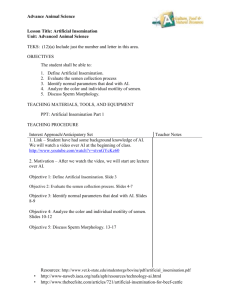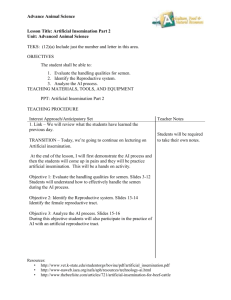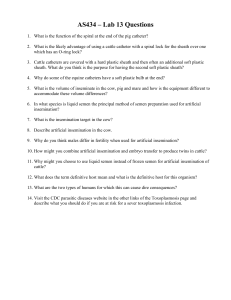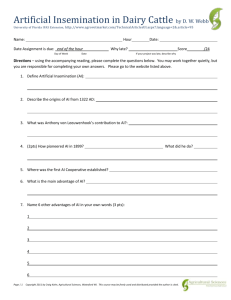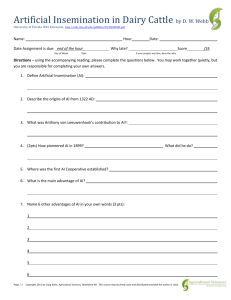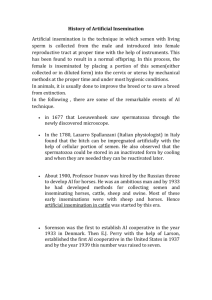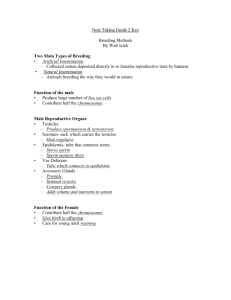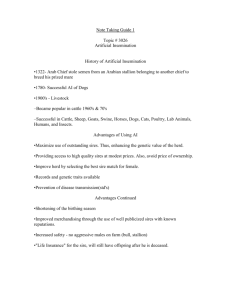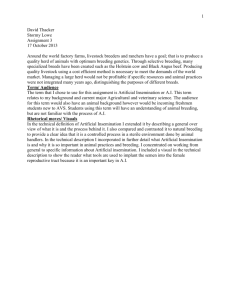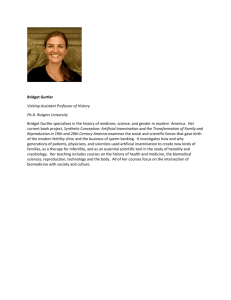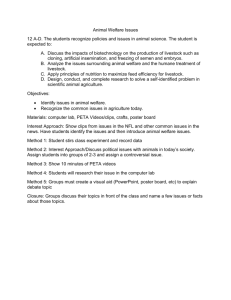SHSU Advanced Animal Science Workshop Policies and Issues in
advertisement
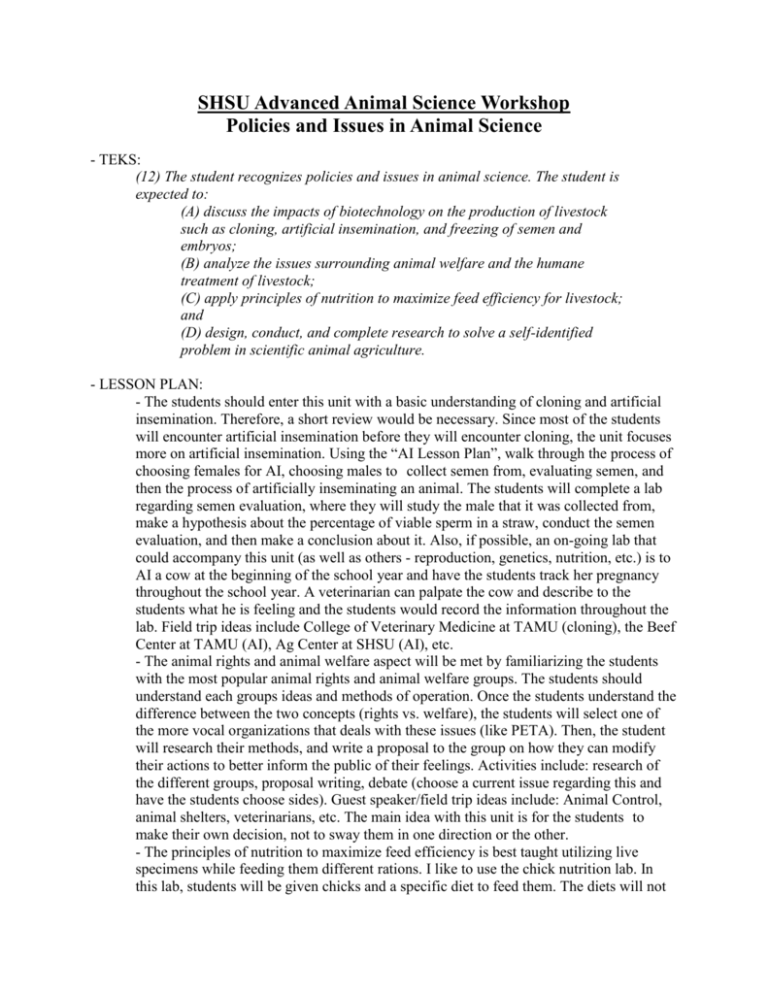
SHSU Advanced Animal Science Workshop Policies and Issues in Animal Science - TEKS: (12) The student recognizes policies and issues in animal science. The student is expected to: (A) discuss the impacts of biotechnology on the production of livestock such as cloning, artificial insemination, and freezing of semen and embryos; (B) analyze the issues surrounding animal welfare and the humane treatment of livestock; (C) apply principles of nutrition to maximize feed efficiency for livestock; and (D) design, conduct, and complete research to solve a self-identified problem in scientific animal agriculture. - LESSON PLAN: - The students should enter this unit with a basic understanding of cloning and artificial insemination. Therefore, a short review would be necessary. Since most of the students will encounter artificial insemination before they will encounter cloning, the unit focuses more on artificial insemination. Using the “AI Lesson Plan”, walk through the process of choosing females for AI, choosing males to collect semen from, evaluating semen, and then the process of artificially inseminating an animal. The students will complete a lab regarding semen evaluation, where they will study the male that it was collected from, make a hypothesis about the percentage of viable sperm in a straw, conduct the semen evaluation, and then make a conclusion about it. Also, if possible, an on-going lab that could accompany this unit (as well as others - reproduction, genetics, nutrition, etc.) is to AI a cow at the beginning of the school year and have the students track her pregnancy throughout the school year. A veterinarian can palpate the cow and describe to the students what he is feeling and the students would record the information throughout the lab. Field trip ideas include College of Veterinary Medicine at TAMU (cloning), the Beef Center at TAMU (AI), Ag Center at SHSU (AI), etc. - The animal rights and animal welfare aspect will be met by familiarizing the students with the most popular animal rights and animal welfare groups. The students should understand each groups ideas and methods of operation. Once the students understand the difference between the two concepts (rights vs. welfare), the students will select one of the more vocal organizations that deals with these issues (like PETA). Then, the student will research their methods, and write a proposal to the group on how they can modify their actions to better inform the public of their feelings. Activities include: research of the different groups, proposal writing, debate (choose a current issue regarding this and have the students choose sides). Guest speaker/field trip ideas include: Animal Control, animal shelters, veterinarians, etc. The main idea with this unit is for the students to make their own decision, not to sway them in one direction or the other. - The principles of nutrition to maximize feed efficiency is best taught utilizing live specimens while feeding them different rations. I like to use the chick nutrition lab. In this lab, students will be given chicks and a specific diet to feed them. The diets will not be unethical, but rather deficient in certain nutrients that will not have a negative impact on the body of the chick, just the rate of gain. The students, after learning proper nutrition, will hypothesize whether their chicks will thrive or will be deficient. They will complete the lab write-up for this lab. This lab will demonstrate the need for proper nutrition for maximum feed efficiency. - Throughout the course, I have my students submit scrapbooks (see the outline). In order to meet the last TEK for this unit, my students choose a current event that they have done a scrapbook page over. Then, the students will turn this topic into a lab. They will begin by outlining their experiment or choosing a direction to go in with their experiment. The students can take suggestions from classmates or the teacher, but they may not re-do an experiment that has already been conducted. Ideally, the students would want to identify a problem with regard to that issue, and then create a solution to the problem using the evidence and data they collected. They will present their findings to the class when the experiments are completed. This would include a visual aid and an oral presentation. - EVALUATION: o The students will assessed on their preparation, execution, and conclusion of their experiment. The students will also be assessed using a rubric for their visual aid and oral presentation.
